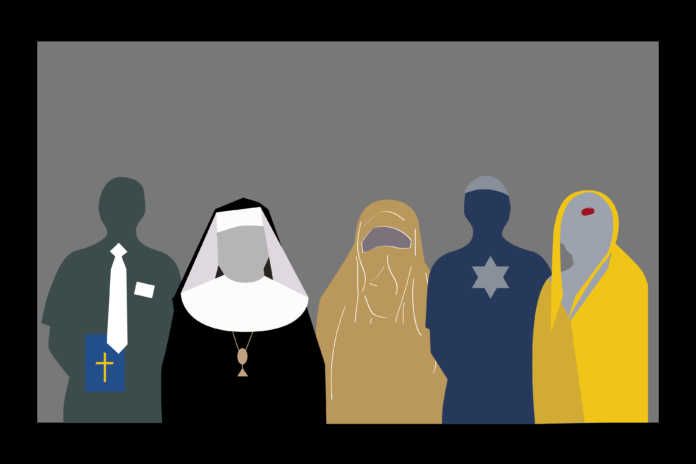Religion is portrayed in many different ways than our parents or grandparents experienced
The topics explored and the themes portrayed in today’s media are vastly different than what was tolerated just 50 years ago. For example, when Lucille Ball got pregnant during her run as the star of “I Love Lucy,” showrunners consulted with a priest, a rabbi and a minister in order to ensure that no viewer would be offended by the show’s depiction of a pregnant woman. The series never even uttered the word “pregnant” throughout the story’s arc.
In today’s era of HBO and minimal censorship, concerns like those seem trivial. Whether or not something is offensive to people who are religiously affiliated with the many sects of Christianity does not seem to be a priority in the minds of those working in media today.
This is presumably correlated with the decline in religious affiliation in many countries, specifically the U.S. The American public in general is focusing less and less on religion, according to studies conducted by the Pew Research Center. And an NPR poll discovered that only about four in 10 millennials consider religion to be important in their lives.
This change is reflected in current media. We are no longer in the age of “I Love Lucy,” where purity, heterosexuality and the perpetuation of the nuclear family are deemed the only acceptable ideals. So how has this decline in religious affiliation affected the way religion is portrayed and received by the media?
One impact of this has been the increase in religious tolerance and diverse representations of religion in the stories that are told. An article in The New York Times discussed where religion comes into play in television.
“Given the sheer number of series in the age of peak TV and the recent focus on diversity of all kinds, there should be room for religion and religious diversity, too,” according to Margaret Lyons and James Poniewozik.
There are several examples of religious diversity on mainstream and network television. For example, a notable storyline on “Orange is the New Black” was Cindy’s conversion to Judaism. The storyline subverted stereotypes and was handled in a respectful manner in regards to the Jewish and Black communities. Other examples include the way Abed on “Community” broke down stereotypes as a Muslim character.
Kanye West serves as a pivotal figure who includes Christianity in his mainstream fame. His most recent album “Jesus is King” included hyper-Christian themes and received mixed reviews. It was criticised most notably for its lyricality and perpetuation of extreme religious ideals.
“Revelations in recent weeks — that he admonished his wife for wearing tight clothes, asked collaborators to abstain from premarital sex, and began keeping a Christian scorecard that includes limiting himself to two curse words a day — suggest his interpretation of the gospel has been more dogmatic than faithful,” stated an article in Pitchfork.
Although West was able to continue his success despite his preaching of strict Christian scripture, other publically Evangelical Christians have not fared as well with the general public. This is, in part, due to the intolerance that is often associated with these types of Christians and their churches. Characters like Angela Martin on “The Office” are depicted as annoying and judgemental — and this extends beyond the realm of fiction. Strict conservative Christian sisters Bethany Baired and Kristen Clark became infamous when popular YouTube commenter Cody Ko filmed a critique of their YouTube channel. They became one of the most hated and criticised channels on the platform due to their antiquated beliefs and intolerant messages.
More progressive versions of Christianity, however, fare better in the public eye. For example, the first episode of the second season of “Queer Eye,” featuring a devout Christian mother and her gay son, is one of the most popular and beloved episodes of the season. The episode details the struggles people in the LGBTQIA community face in the church, but ends on a positive note, suggesting that anyone can find peace in their spirituality, no matter what that looks like.
One of the most noteworthy differences in the way the media has evolved when it comes to the exploration of these topics is the way spirituality can be depicted outside the realm of a specific religion. One example is Michael Schur’s “The Good Place,” a sitcom about a non-denominational afterlife. The rules of The Good Place are based around moral, ethical and philosophical concerns, rather than relying on traditional religious beliefs. It barely touches upon institutional religion itself — in the first episode, Ted Danson’s character remarks that, in respect to the afterlife, “Every religion got it about 5% right.”
The afterlife in “The Good Place” has no version of a God, rather it focuses on the impact that humans have on their own fate. Although the “I Love Lucy” era may have deemed “The Good Place” to be an offensive display of sacrilege, today many people find solace in its message and accept that everyone’s view of spirituality and religion may look different from their own.
Written by: Alyssa Ilsley — arts@theaggie.org





